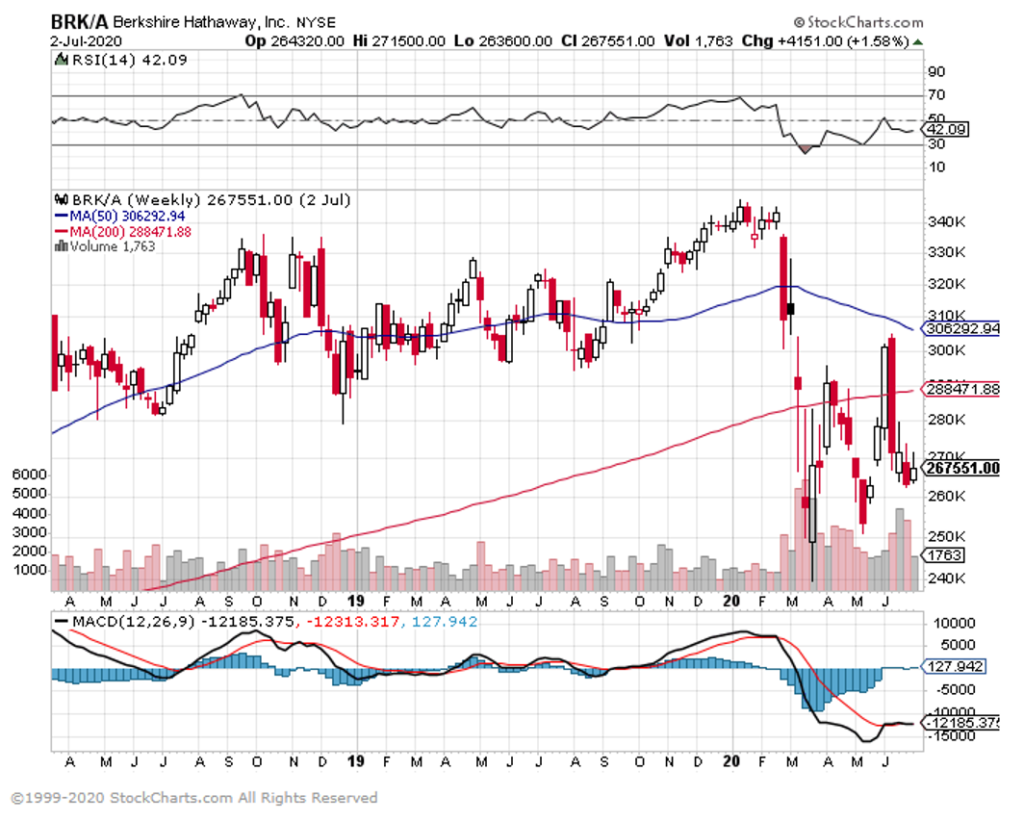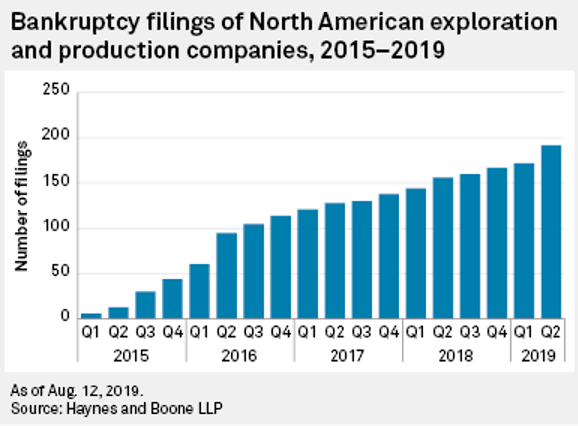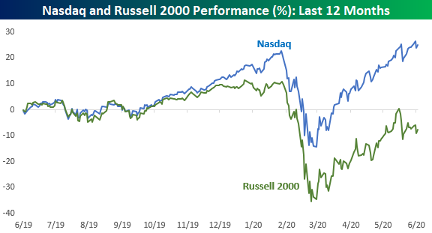1. Berkshire Hathaway Trades at Lowest Price to Book in 30 Years
Buffett puts some cash to work with buy of Dominion.

Buffett puts some cash to work with buy of Dominion.

Posted June 29, 2020 by Joshua M Brown
Ryan Detrick from LPL Financial made my Chart o’ the Day today…


As oil and gas bankruptcies rise, S&P warns of coming shale producer downgrades–AuthorBill Holland
Continue readingBespoke Investment Group–Nasdaq – Russell Spread Pulling the Rubber Band Tight
The Nasdaq has been outperforming every other US-based equity index over the last year, and nowhere has the disparity been wider than with small caps. The chart below compares the performance of the Nasdaq and Russell 2000 over the last 12 months. While the performance disparity is wide now, through last summer, the two indices were tracking each other nearly step for step. Then last fall, the Nasdaq started to steadily pull ahead before really separating itself in the bounce off the March lows. Just to illustrate how wide the gap between the two indices has become, over the last six months, the Nasdaq is up 11.9% compared to a decline of 15.8% for the Russell 2000. That’s wide!
